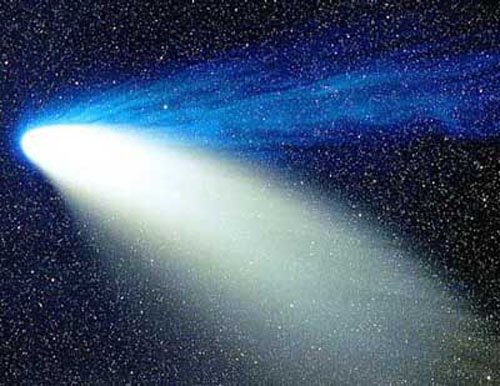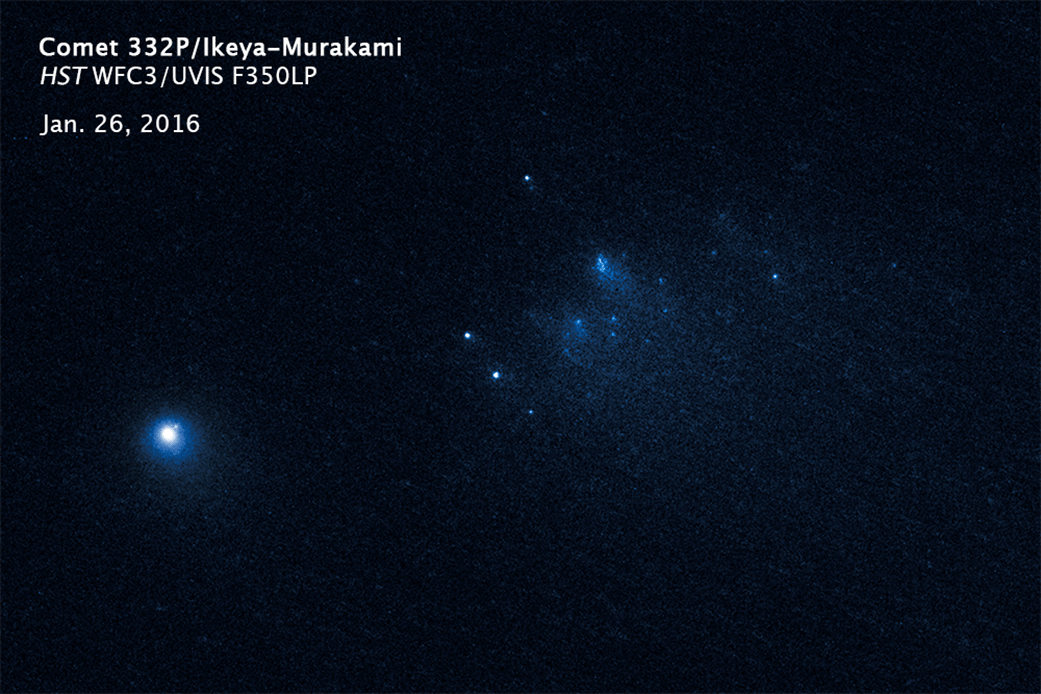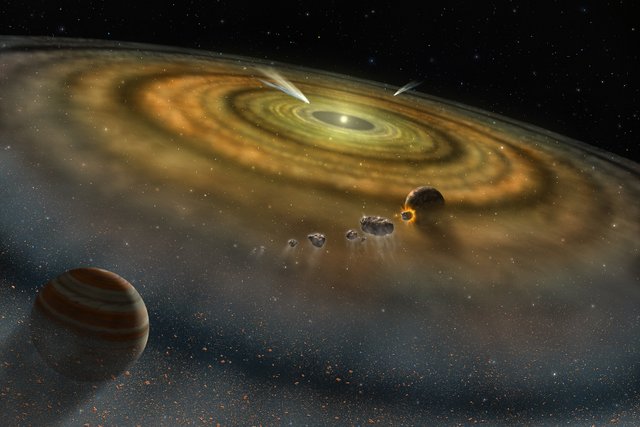Comet 332P offers insight to life of comets
The NASA Hubble Space Telescope has captured rare images of a comet at the inner solar system breaking apart, but not for the reasons that scientists thought might happen.

What is it?
In January 2016 a comet 67 million miles away from earth began to break apart and attract the attention of the Hubble space telescope. The images taken showed 25 individual fragments mainly made from ice and dust, began to drift away from the comet that they came from.
The comet in question is called comet 332P/Ikeya-Murakami, or 332P for short. The 4.5 billion year old comet is said to be spinning so fast that it is actually beginning to fall apart. The debris that is coming off of it is then ejecting into the 3,000 mile long tail trailing behind it. These findings are now offering a new look into the life of comets as the enter the inner solar system.

Why do we only see it now?
The reason that something like this has never been seen before, or at least recorded in great detail is because, comets seemingly break apart at random times. It is very hard to predict when and where a comet start to break apart so this discovery is a great opportunity for astronomers everywhere to get a glimpse into the life of these enormous chunks of ice and dust.
Why is this important?
332P is not a very large comet. It measures only 1600 feet wide and about 1800 feet wide. The bits and pieces of the comet that break off range in length from 65 feet to 200 feet. When these pieces get hit by sunlight they reflect it and we are able to measure the eroation time of them. The same thing can be done with the comet they cam off of. This allowed astronomers to find that 332P rotates once every 2 to four hours.
As the comet approaches the sun getting closer and closer, the comet itself begins to vaporize because it is mostly made from ice and dust. As the sunlight heats the surface of the comet it causes it to eject jets of gas and dust. Due to the size of the nucleus of this comet, the jets act like a source of propulsion making the comet spin even faster. As it begins to spin faster and faster the surface begins to loosen, and break apart. This has allowed astronomers to predict that the comet will likely be completely broken up completely in about 150 years.
With the new findings about the life of a comet we will likely begin to look more and more at these interesting chunks of debris. They may also lend insight into the early life of the solar system and yield findings in many other areas of science.

Sources:
www.space.com/34092-comet-disintegration-hubble-telescope-photos.html
www.nasa.gov/sites/default/files/thumbnails/image/hubblecometvideogifv1635a332p160831-1041.gif
spaceplace.nasa.gov/review/comet-quest/hale_bopp.en.jpg
www.nasa.gov/images/content/149890main_BetaPictDiskbMac.jpg
Interesting stuff. Keep it up. I enjoy everything space related :)
Thanks for the feedback I really appreciate it.
Nice post! If you ever want help with formatting and asthetics of posts, and use steemit.chat stop by the group #steemprentice
Thanks I take all the recommendations I can get. :)